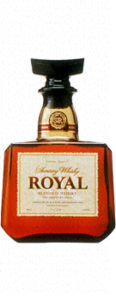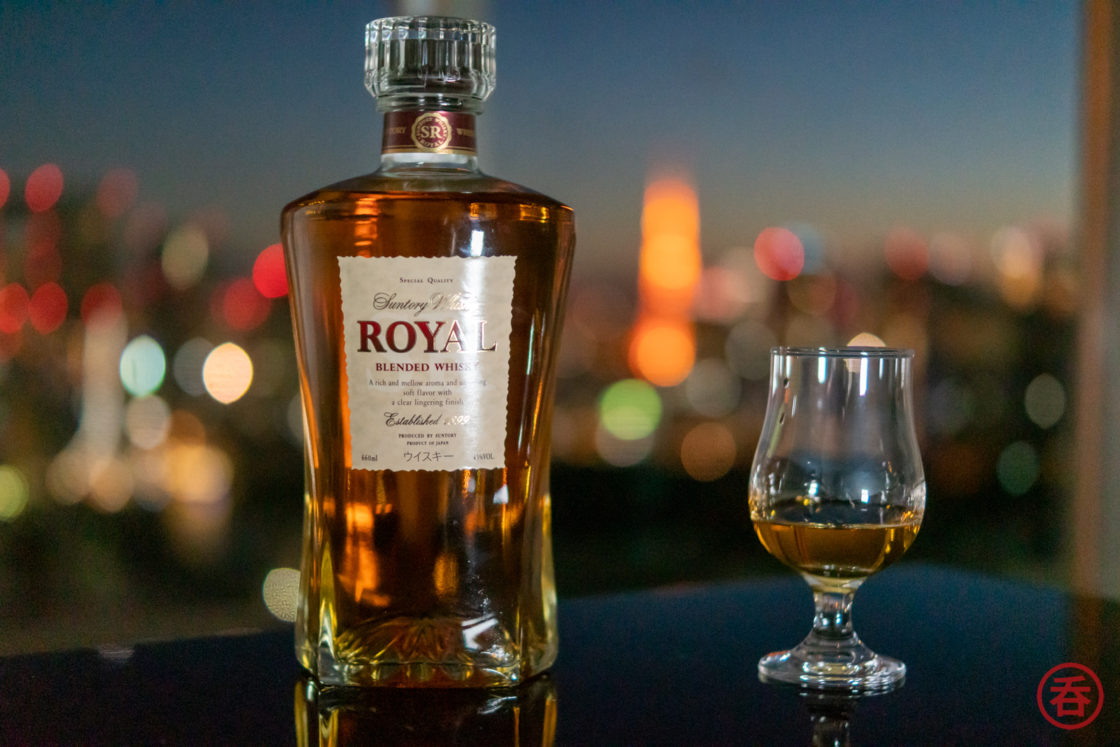In part one of this three-part series, we’re revisiting classic bottles from days of yore that are, surprisingly, compliant with the newly announced JSMLA standard for Japanese whisky. Importantly, they are also affordable and easy to find in Japan. Our first stop: Suntory Royal, a blended whisky born in 1960.
Suntory Royal was created to celebrate the 60th anniversary of the company, and it’s the last blend created by first-generation Master Blender and company founder Shinjiro Torii.If you have a look at the Japanese Whisky Timeline, you’ll notice that while Yamazaki was around, 1960 predates the establishment of both Hakushu and Chita. Where, then, did Suntory make grain whisky to put into Suntory Royal? The answer prior to 1947 is the Osaka Factory, which these days makes gin and liqueur. From 1947 until as recently as 1996, they distilled grain whisky at their Usuki Factory in Oita.
 In the six decades since its first release, Suntory Royal has thus seen its source of grain whisky change, and Hakushu was added to the blend after it opened. The bottle also saw premium editions and age statements come and go in the late 90s to early 2000s. In its heyday, long before Hibiki was around, Suntory Royal was the company’s premium blended whisky for elites probably enjoying Ginza’s bubble-era nightlife.
In the six decades since its first release, Suntory Royal has thus seen its source of grain whisky change, and Hakushu was added to the blend after it opened. The bottle also saw premium editions and age statements come and go in the late 90s to early 2000s. In its heyday, long before Hibiki was around, Suntory Royal was the company’s premium blended whisky for elites probably enjoying Ginza’s bubble-era nightlife.
Let’s talk about bottle design for a minute. My picture for this review is of the “Slim” bottle. But Royal is probably better known as being in the bottle you see here, designed to resemble the kanji 酉 (tori), a container for sake (酒). Royal also still gets yearly ceramic bottles following the Chinese zodiac, and it’s been through a few rounds already.
When it comes to blended whiskies from Suntory, Hibiki is obviously the world-famous one that everyone thinks of. But good luck finding even NAS Hibiki sold at MSRP these days. Meanwhile, Suntory Royal has been right under our noses for over 60 years, reminding us that whisky isn’t going anywhere.
Review: Suntory Royal
Nose: Sugary, milky, dried citrus, and a smidgen of leather cigar case. The abv comes through loud and clear.
Palate: Light as air. If it weren’t for the nose, this is the kind of bottle you don’t even realize you’ve finished half of it in one sitting. Those dried fruits show up, this time with some darker, woody raisin in the mix. Some bitter coffee and chocolate in the background.
Finish: Is that… smoke? Yes it is. Not much but it’s there if you go looking for it. That chocolate coffee sticks around too.
Score: B-
Price paid: 2821 yen, 43% abv, 660ml
At this price point it’s tempting to compare Suntory Royal to Nikka FTB, but guess what, Nikka FTB isn’t JSLMA-approved Japanese whisky! And since the “secret” of Nikka FTB got out, it’s not easy to find these days anyway.
If you’re the kind of person that wants to take a bonafide Japanese whisky to a party, but you don’t want to hit up your own stash, Suntory Royal just might be the answer you’ve been looking for.
Hi there! I created and run nomunication.jp. I’ve lived in Tokyo since 2008, and I am a certified Shochu Kikisake-shi/Shochu Sommelier (焼酎唎酒師), Cocktail Professor (カクテル検定1級), and I hold Whisky Kentei Levels 3 and JW (ウイスキー検定3級・JW級). I also sit on the Executive Committees for the Tokyo Whisky & Spirits Competition and Japanese Whisky Day. Click here for more details about me and this site. Kampai!


I am wondering whether the older Suntory Royal (AS & NAS) could meet the requirements of JSLMA?
Excellent question that I unfortunately don’t have the answer to. Brands like Royal have seen plenty of reformulation over the decades, and Suntory only told us about the pedigree of their *current* portfolio.
Given they were one of the companies in the JSLMA working group to decide the standard, it’s possible they reformulated prior to the public announcement to avoid backlash.
The JSLMA can’t even seem to provide us consumers with a comprehensive list of compliant products from their members’ current portfolios, so I can’t imagine they have the resources to consider past products as well.
Thanks!
Some netizens told me that those old Japanese whisky contain little real Japanese whisky.
Although Suntory is capable to produce Japanese single blended whisky, I think it is in doubt that Suntory would produce blended whisky that wholly produced in Japan. Even the second largest producer, Nikka, produce little whisky that meet the requirement except for the single malts,